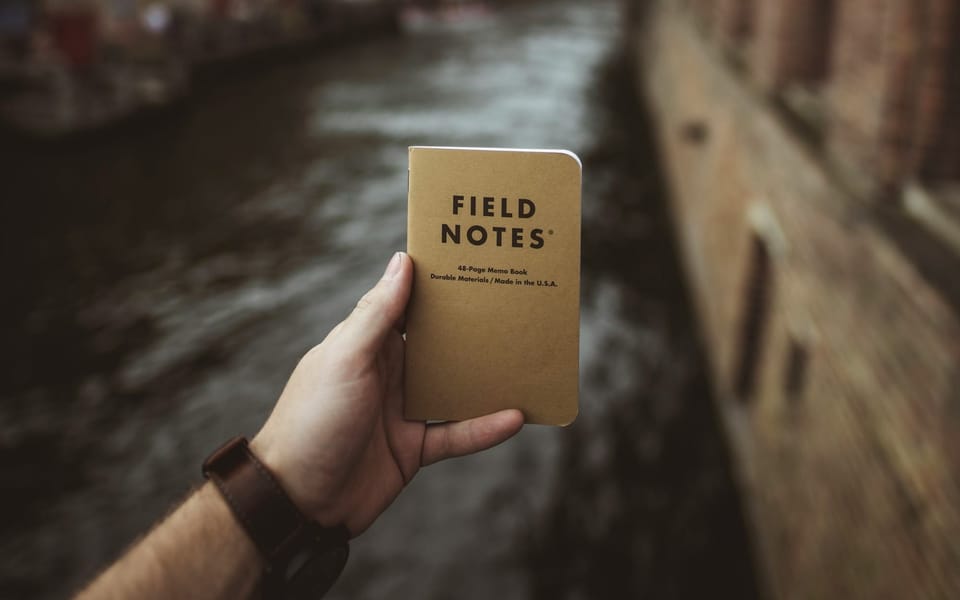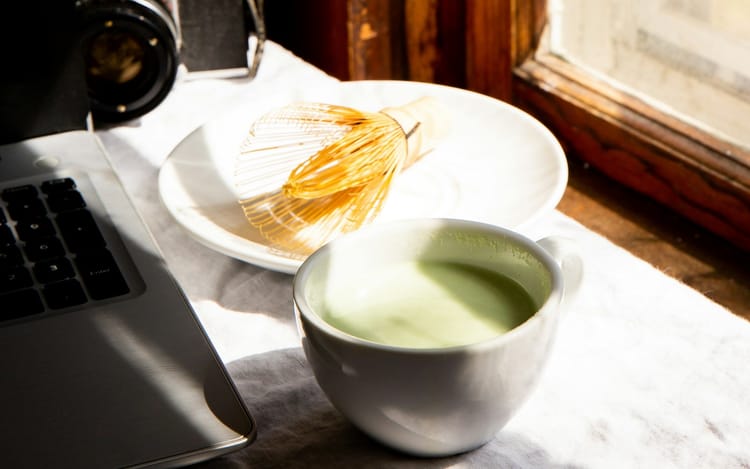How I Use My Field Notes

Field Notes are my little everyday companions. I use them constantly, whether to jot down ideas, capture quick thoughts, follow up on to-dos, or keep track of what’s happening at work. They help me prioritize, reflect, and maintain awareness of how I’m spending my days.
They’ve also become a great way to track habits, reflect on the week, and stay present. It took me a few months to find a setup that worked for me, but that’s the key: find your system. I’m still tweaking mine, making small improvements as I go.
If you’ve ever wanted to use a small notebook like Field Notes but didn’t know where to begin, I hope this guide gives you some ideas on how to make them part of your everyday life.
My Weekly Setup

I dedicate two pages per week to:
- Habit tracking
- Weekly reflection
- “Storyworthy” moments
This one-week layout gives me just the right scope. I don’t need to see a full month; short-term focus helps me stay consistent and flexible. Sometimes a single notebook lasts a month, other times only two or three weeks, so a weekly view fits perfectly.
Tip: Start small. You don’t need a perfect layout. Begin with one week and refine as you go.
Reflections
The reflection section helps me pause and ask:
- What went well this week?
- What didn’t?
- What can I change next time?
It’s not always easy. Reflection takes effort and honesty, but the clarity it brings is worth it. Over time, I start noticing patterns, habits that repeat, moods that fluctuate, and areas that need attention. Once I see those patterns, I can act on them and make real improvements.
It’s a simple but powerful practice for self-awareness and growth.
Storyworthy Moments
This idea comes from Storyworthy by Matthew Dicks. In the book, he suggests capturing one “storyworthy” moment every day—something that stood out, no matter how small.
It doesn’t need to be dramatic, like “I climbed a mountain at 2 AM to see the sunrise.” It can be something tiny but meaningful, like:
“I got a notification that my new watch was arriving today. When I heard the doorbell, I rushed to open it, only to find it was someone dropping flyers. I laughed at how excited I got.”
Moments like that often reveal more about us than the big, staged highlights we usually share. Over time, you get better at spotting these moments. It becomes a daily gratitude and storytelling exercise rolled into one.
Habit Tracking
I track several daily habits using a simple table. I use three colors to visualize progress:
- 🟥 Red – Didn’t do it
- 🟨 Yellow – Did a little
- 🟩 Green – Did a lot
For example:
- Writing: Green if I publish a blog post or journal, Yellow if I only journal, Red if I skip both.
- Sleep: Tracked by hours.
- Coffee / Water: Logged by number of cups.
Sure, there are plenty of apps for this, but tracking by hand feels different. It’s grounding. No notifications, no distractions. Just you, a pen, and paper. It’s an act of presence and a small rebellion against constant digital noise.
Daily Planning and Journaling

Each day starts with:
- One highlight: the most important thing I want to accomplish (something I’ll spend up to 90 minutes on).
- To-dos: work and personal.
- Notes: thoughts, ideas, and reflections as the day unfolds.
For example, today’s highlight was “Write and publish one article for my blog.”
Focusing on one meaningful task per day gives me a small but satisfying sense of progress.
End-of-Day Questions
At the end of the day, I ask myself two simple questions:
- What worked today?
- What didn’t work today?
Then I list small and big wins, frustrations, or lessons. Some days it’s practical; other days it’s just a place to vent. Either way, it helps me close the day with reflection and intention.
When one Field Notes notebook is full, I simply move to the next. Each one becomes a snapshot of a chapter in my life.
Summary Table
| Section | Purpose | Key Benefit |
|---|---|---|
| Weekly Setup | Organize habits, reflections, and stories in a two-page view | Keeps focus short-term and flexible |
| Reflections | Review what worked and what didn’t each week | Builds self-awareness and growth |
| Storyworthy Moments | Capture one small story from the day (inspired by Matthew Dicks’ Storyworthy) | Boosts gratitude and storytelling skills |
| Habit Tracking | Visualize consistency using colors | Encourages accountability and reduces screen time |
| Daily Planning | Choose one key highlight and track to-dos | Ensures daily progress toward bigger goals |
| End-of-Day Questions | Reflect on the day’s wins and challenges | Promotes continuous improvement and closure |
Thanks for reading, and if you use Field Notes or any small journal, I hope this helps you find your own way of making it part of your daily rhythm.
See You Soon!




